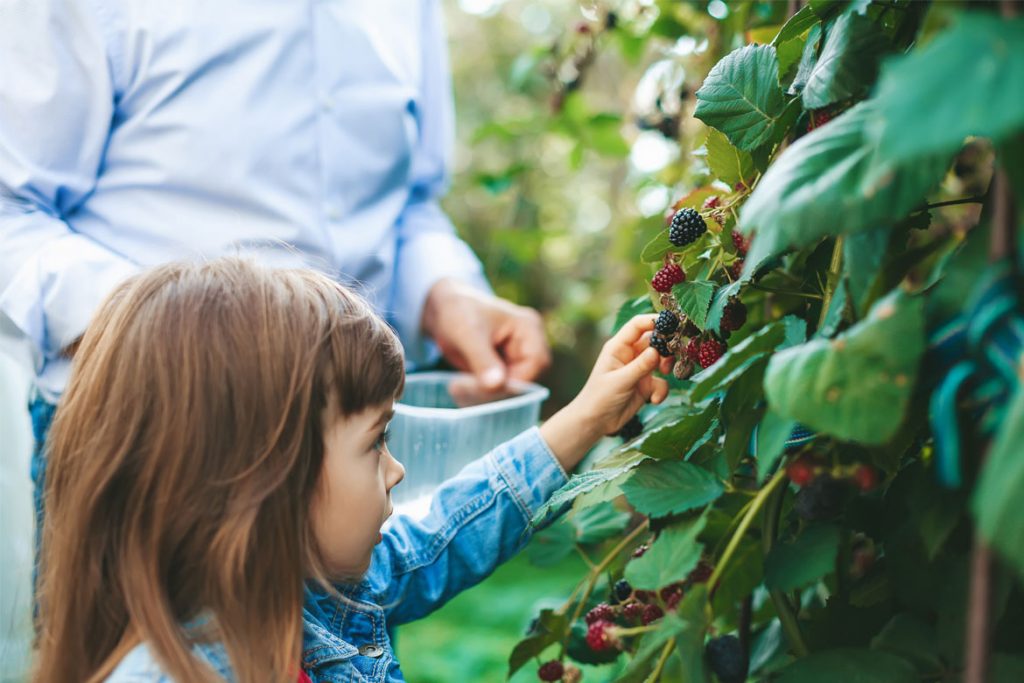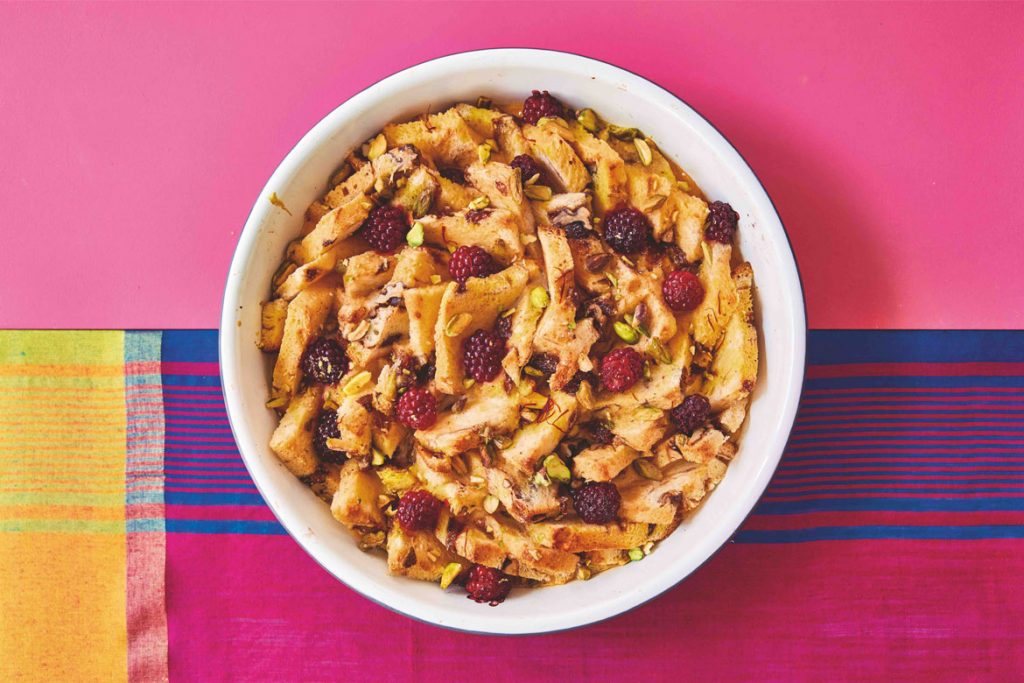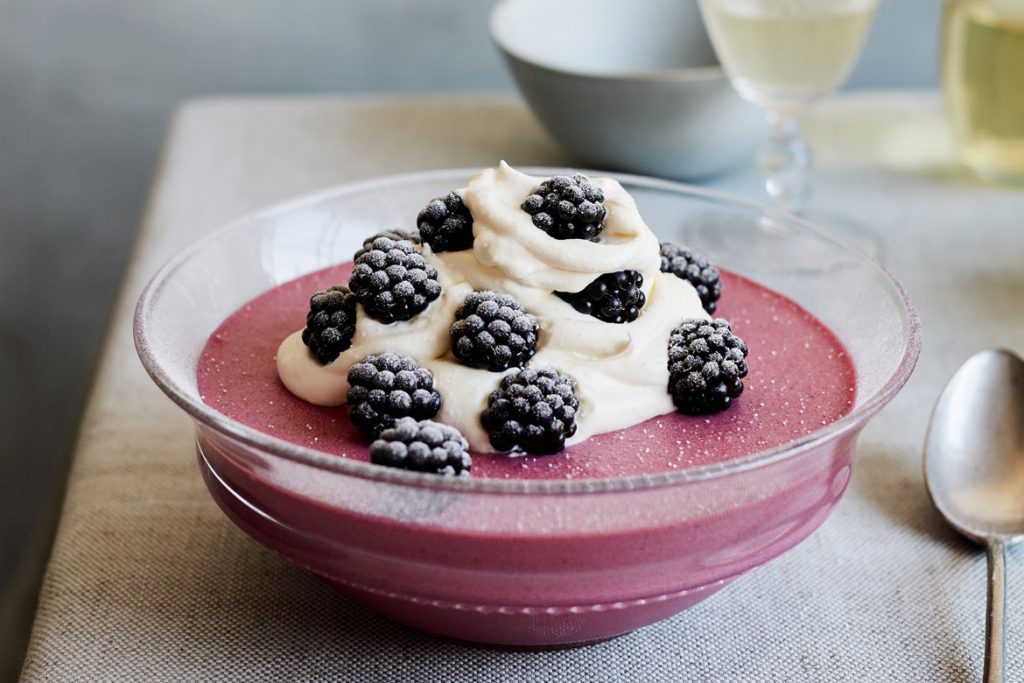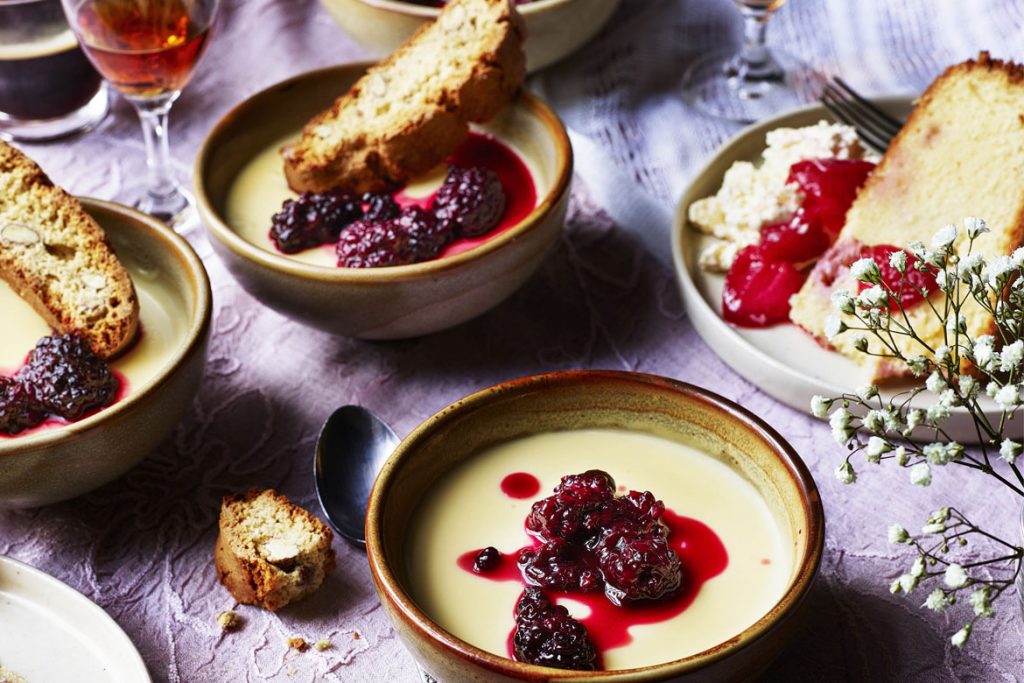They’re easy to grow and you’ll save money, says Hannah Stephenson.
It’s blackberry season, and if you’re lucky enough to live in the countryside or near hedgerows, you could be picking tubs of them now to freeze, rather than spending £2 a punnet at the supermarket.
Blackberries are delicious in crumbles, compotes, jams and mousses, or added to cocktails and syrups. But if you’re in an urban area, which doesn’t have a ready supply of brambles for foraging, these delicious fruits are really easy to grow – even if you don’t have much space.
There are compact varieties, thornless types and various hybrids, including tayberries and loganberries, all of which are not difficult. Here’s what you need to know…
PICTURED ABOVE: Blackberries | Alamy/PA
Easy to grow
Blackberries can thrive in most situations, including exposed areas, north-facing plots and in clay soil, although the ideal situation is in a sheltered spot with well-drained soil. Plant bare-rooted canes in November or December.
Good for camouflage
If you want to hide an unsightly fence in your garden, choose a modern blackberry variety. Long, arching canes may give you up to 25lbs of fruit per plant and the plant may remain productive for around 20 years. You can attach wire horizontally along the fence and train the blackberry stems to it.
Need support
If you don’t have a fence or shed to support them, put up a post and galvanised wire fence about 5ft high, with two or three horizontal wires spaced evenly apart, spanning around 3m (10ft), training the stems along the wire with soft twine. You can train a more compact variety against a fence which spans 1.8m (6ft).
Smaller plots are fine
If you have a small plot, go for a compact variety such as ‘Loch Tay’, which has short, thornless canes.
May suit vertical planting
Instead of planting an ornamental climber, consider a thornless blackberry such as ‘Oregon Thornless’ or ‘Loch Ness’ to climb over a pergola, which should give you plenty of fruit for those autumn pies and won’t scratch you when you brush past them.
Growing maintenance
Make sure the ground is well weeded before you plant, and keep it clear of weeds while the blackberry canes are growing. Add plenty of organic matter to the soil before planting, water the plants regularly in dry weather, and keep the soil moist when the fruit is set. Mulch in spring with compost or well-rotted manure, then add a general purpose feed and water it in.
Protect from birds
Visiting birds will take their share of ripening berries, so protect the fruits with netting.
Alamy/PA
How to prune
Blackberries can be pruned after harvesting in summer or autumn. Fruit is produced on two-year-old canes (the previous season’s growth). So, in the first year of planting, canes produce shoots from the soil and put on several metres of growth. The following year, lateral shoots appear on the long stems. These shoots flower and produce fruit in the summer, then die off in winter.
Keep this year’s fruiting canes separate from young new canes by tying new canes in a vertical bunch in the centre, and then training them along the top wire, and tying the fruiting canes to the wires below. When all the fruit has been picked, the old canes can be cut back. Then you can lower the new canes, which have been growing vertically on to the wires below, which will provide next year’s fruit.
While blackberries are hardy, you may have to remove frost-damaged growth in spring, cutting back dead shoot tips.
When to harvest
Pick when the fruits are coloured and you can pull each blackberry gently away from the stem. If you pick overripe fruits, they all but disintegrate in your hand. Harvest them on dry days and freeze immediately if you want them for later.
Some will be ready in late summer, others in autumn depending on the variety. Good varieties include ‘Veronique’, a thornless type with a semi-upright habit, which is suitable for fanning over a 6ft fence panel and produces fruits in late summer. Plus ‘Black Butte’, a vigorous type, which produces berries twice the size of many blackberries, and ‘Loch Ness’, which has stout stems requiring little support and should be ready for picking in late August and September.
How to freeze
Give the harvested fruit a quick wash in a colander, put the berries on a baking sheet and place them in the freezer. Once they are frozen, you can bag them up and return them to the freezer. They should be good for around six months.
Words by Hannah Stephenson, PA
Here is a little inspiration on how to cook up a storm with your blackberry crop…
David Loftus/PA Photos
Shahi tukra bread and butter pudding
Serves 6-8
INGREDIENTS
- 50ml milk (whole or semi-skimmed)
- 3 medium free-range egg yolks
- 85g caster sugar
- 300ml single cream
- 400g sliced brioche, cut into quarters
- 150g blackberries
- Handful chopped pistachios
- Clotted cream, to serve
- Generous 1⁄2tsp good saffron threads
- 6 cardamom pods, seeds ground
METHOD
- Preheat the oven to 150°C fan/170°C/gas 3. Heat the milk in a small saucepan and add the saffron. Turn off the heat and let it infuse.
- Meanwhile, whisk the egg yolks with the caster sugar, single cream and ground cardamom seeds. Arrange the sliced brioche and blackberries in a buttered roasting tin or flan dish and pour over the eggy custard.
- Use the back of a teaspoon to mash the saffron into the milk (this will release more colour), and then carefully drizzle this all over the pudding. Scatter with the pistachios and then transfer to the oven to bake for 25–30 minutes until golden brown and crisp on top. Serve immediately with clotted cream.
TIP: Do use the best saffron you can find. I find the Belazu brand consistently good and wonderfully aromatic, but other supermarket brands of saffron less so.
Recipe from India Express: Fresh And Delicious Recipes For Every Day by Rukmini Iyer, published by Square Peg.
Laura Edwards/PA
Wild bramble mousse
MAKES 6
INGREDIENTS
- 600g blackberries
- Juice of ½ lemon
- 175g caster sugar
- 5 leaves of gelatine
- 150ml pouring double cream
- 2 egg whites
To serve:
- 50g blackberries
- Icing sugar, for dusting
- 100ml whipped cream
METHOD
- You will need a 1.1 litre (2 pint) glass dish or six small dishes.
- Tip the blackberries, lemon juice and 75g of the caster sugar into a saucepan. Stir, cover the pan and simmer for five to eight minutes until soft. Pass the blackberries through a sieve back into the pan, then discard the seeds. Reheat until piping hot.
- Put the gelatine leaves into a bowl of cold water and leave for five minutes. Squeeze the water from the gelatine leaves and add them to the hot blackberry juice. Stir until dissolved. Set the mixture aside until it is cold and has thickened slightly.
- Whip the cream to soft peaks. In a separate, clean bowl, whisk the egg whites, adding the remaining 100g of caster sugar a teaspoon at a time. Keep whisking until all the sugar has been incorporated and the whites are stiff and look like a cloud (as for a meringue). Take care not to over whisk or it will be tricky to incorporate the egg whites into the blackberries.
- Add two large tablespoons of the whipped cream to the blackberry and gelatine mixture and stir in gently. Carefully fold in the rest of the cream and the egg whites until the mixture is smooth and light, with no white bits visible. Pour into the dish or dishes and place in the fridge for about six hours, or ideally overnight, to chill and set.
- Decorate with a few blackberries, dust with icing sugar and serve with some whipped cream.
Recipe from Simple Comforts by Mary Berry is published by BBC Books.
Kris Kirkham/PA
Sicilian lemon cream with stewed berries
SERVES 4
INGREDIENTS
For the lemon cream:
- 2 large unwaxed lemons with unsprayed leaves
- 150g caster sugar
- 150ml double cream
- 300g mascarpone
For the berries:
- 250g mulberries or blackberries
- 150ml good red wine
- 60g golden caster sugar
- 1tbsp honey
METHOD
- Zest the lemons and squeeze the juice; you need 80ml juice. Put the lemon zest and 80ml juice in a saucepan with the sugar. Heat over a medium-low heat, stirring until the sugar has dissolved completely. Remove from the heat and keep warm.
- In a separate pan, heat the cream and mascarpone over a medium-low heat, bringing just to a simmer – do not let it boil (otherwise it may separate). Remove from the heat, add the lemon mixture and whisk. Cool slightly, then strain through a fine sieve into bowls. Cool completely, then leave in the fridge for at least eight hours or until firm and chilled.
- While the lemon cream is chilling, prepare the stewed berries. Place the fruit in a saucepan, just cover with water and add the wine, sugar and honey. Bring to the boil, then simmer for 10 minutes or until the fruits are very tender but still holding their shape. Use a slotted spoon to remove the fruits from the liquid to cool. Boil the remaining liquid until syrupy. Let this cool, then pour over the berries. Chill.
- To serve, spoon some of the berries on to each cream. Delicious with biscotti.
Recipe from Sicilia by Ben Tish is published by Bloomsbury Publishing.







Leave a Reply